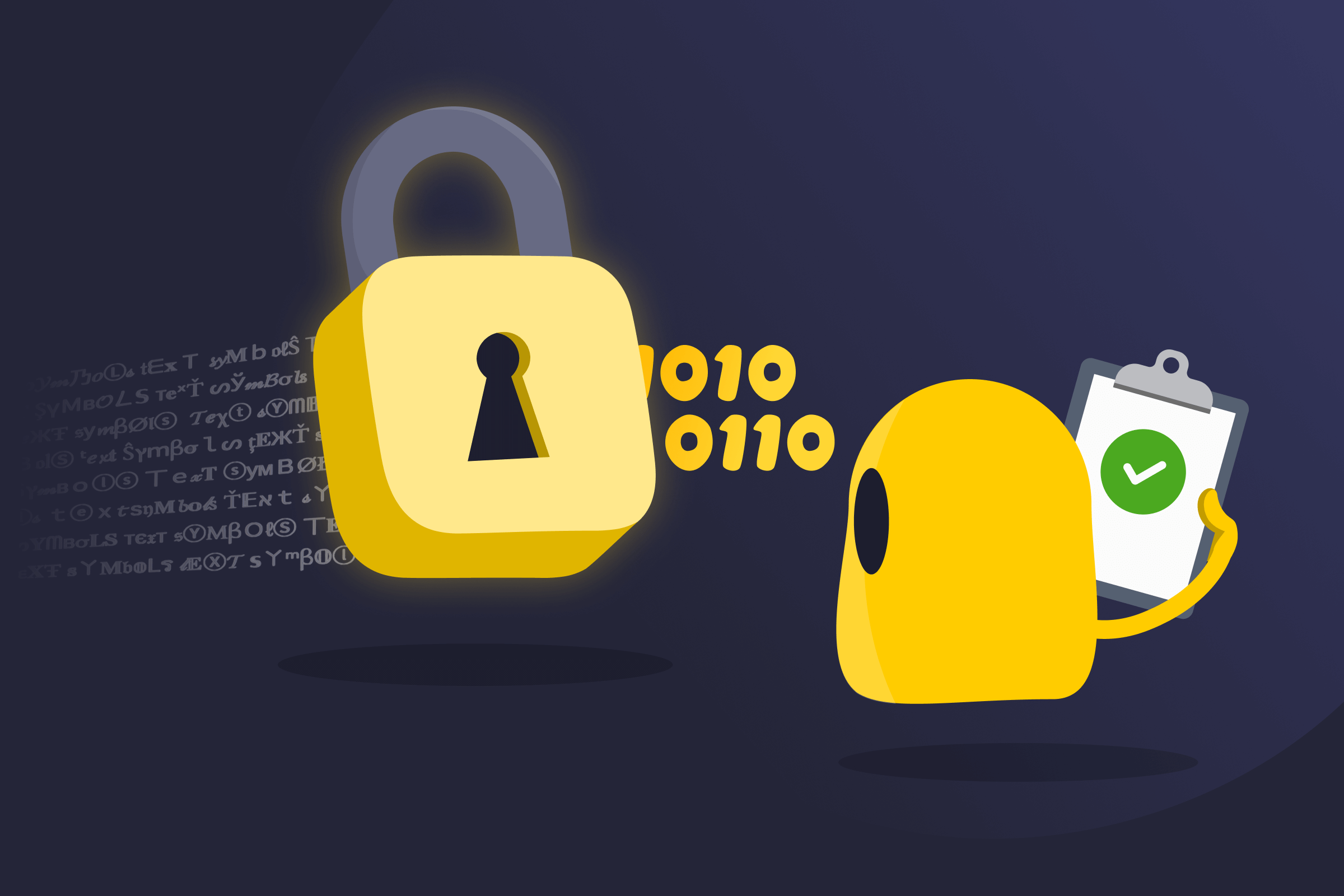One-Way Encryption

One-Way Encryption Definition
One-way encryption is an informal term for hashing, which is a process that turns data into a fixed-length string of characters that cannot be reversed back into its original form. It’s commonly used to secure passwords and verify file integrity.
Hashing algorithms such as SHA-256 or SHA-3 are designed so that even a small change in the original data produces a completely different output. Instead of storing the original information, systems save only its hash value and compare it with new inputs to confirm a match. Because the process is irreversible, the actual data is never exposed.
Where Is One-Way Encryption Used?
- Password safeguarding: Stores only the hash value instead of the real password.
- Data integrity checks: Confirms that files or messages haven’t been changed.
- Digital signatures: Authenticates the origin and content of documents or messages, often with algorithms such as Digital Signature Algorithm (DSA).
- Blockchain transactions: Protects and links records in cryptocurrency systems.
- Authentication systems: Checks user credentials without revealing the originals.
- Download validation: Ensures files are intact by comparing published hashes with downloaded ones.
Pros of One-Way Encryption
- No need for decryption keys: Reduces the risk of theft or misuse.
- Password protection: Stops credentials from being exposed even if a database leaks.
- Tampering detection: Spots when files or messages are modified in transit.
- Speed and efficiency: Processes data quickly with lightweight algorithms.
Cons of One-Way Encryption
- Weak algorithms: Older methods like MD5 or SHA-1 can be cracked with modern computers.
- Brute-force attacks: Attackers can guess inputs until they find a match (unless extra protection, like salting, is used).
- Collisions: Different inputs can sometimes produce the same hash, which weakens reliability.
- Irreversibility: Hash outputs cannot be converted back into the original data.
One-Way Encryption vs Two-Way Encryption
| One-Way Encryption | Two-Way Encryption | |
| Process | Turns data into a fixed hash | Turns data into a ciphertext |
| Reversibility | Cannot be reversed | Can be decrypted with a key |
| Purpose | Verification and integrity checks | Confidentiality and data protection |
| Use cases | Passwords, integrity checks, signatures, blockchain | Communication, data transfer, storage |
Read More
FAQ
One-way encryption is the informal term for hashing, which uses hash functions to convert data into a fixed output. The term “one-way encryption” highlights that the data cannot be recovered to its original form.
It can, depending on the algorithm and how it's used. Older methods, such as MD5 or SHA-1, are no longer secure, while stronger ones like SHA-256 reduce the chance of successful attacks. Hashes may still be guessed through brute-force or dictionary attacks if they're stored without added safeguards.
No. One-way encryption protects data from being directly recovered, but it doesn’t stop every type of attack. Hackers can still use methods like phishing or exploiting weak systems around the encryption. This is why hashing is usually combined with other security measures, such as multi-factor authentication or salting.
Salting adds random data to a password before it's hashed. This makes each hash unique, even if two users have the same password. It helps protect against brute-force and dictionary attacks by making precomputed hash tables ineffective.
Cryptographic algorithms are generally divided into three categories. One-way algorithms handle password storage and blockchain security. Symmetric algorithms use a single key for both encryption and decryption, with examples including AES and DES. Asymmetric algorithms use paired keys, with RSA and ECC being the most common.

 45-Day Money-Back Guarantee
45-Day Money-Back Guarantee